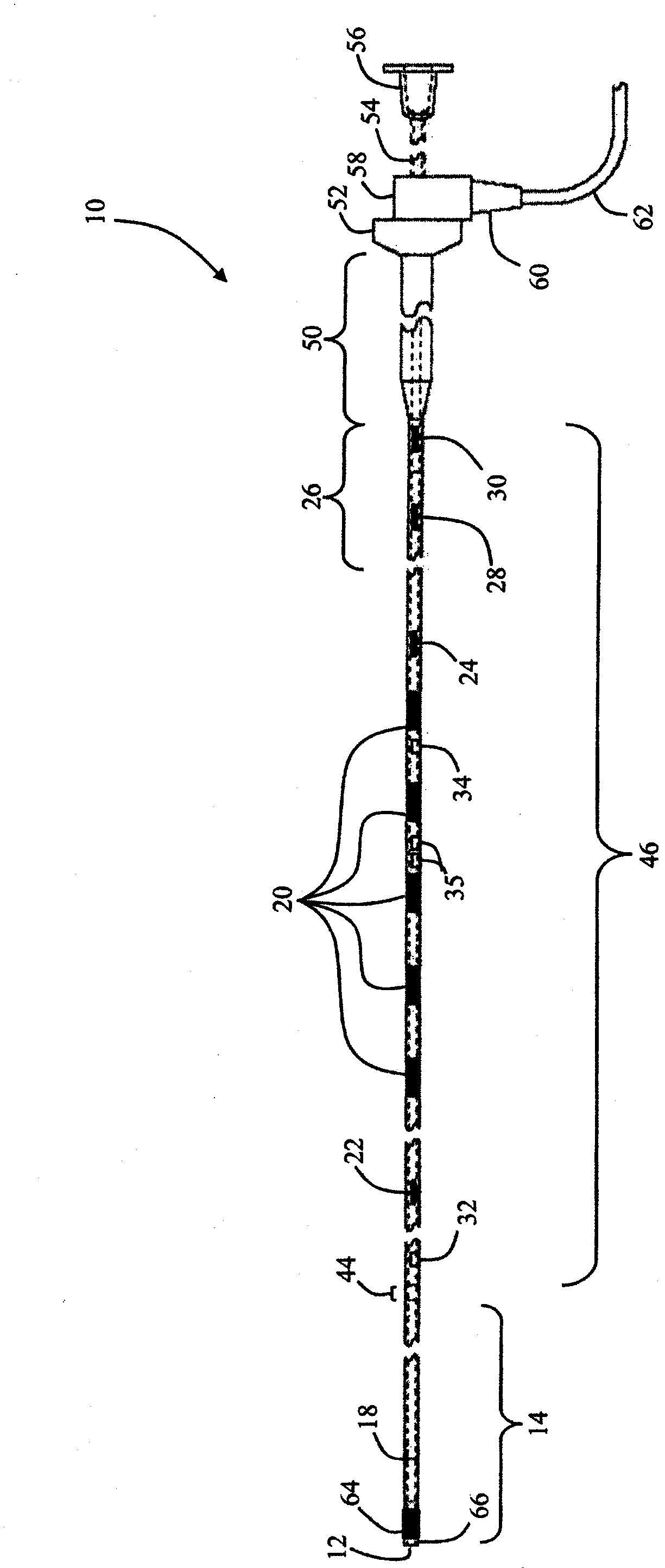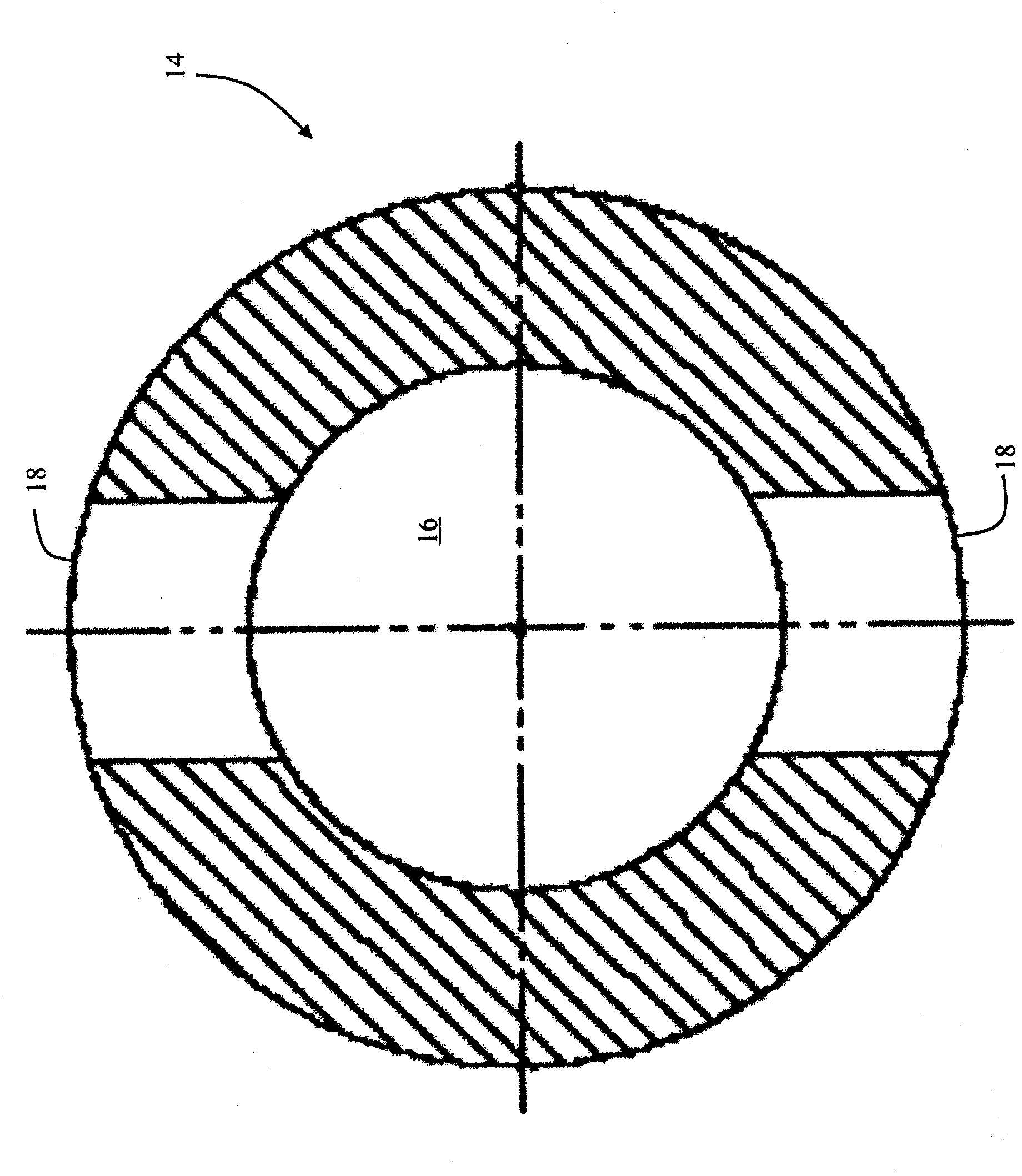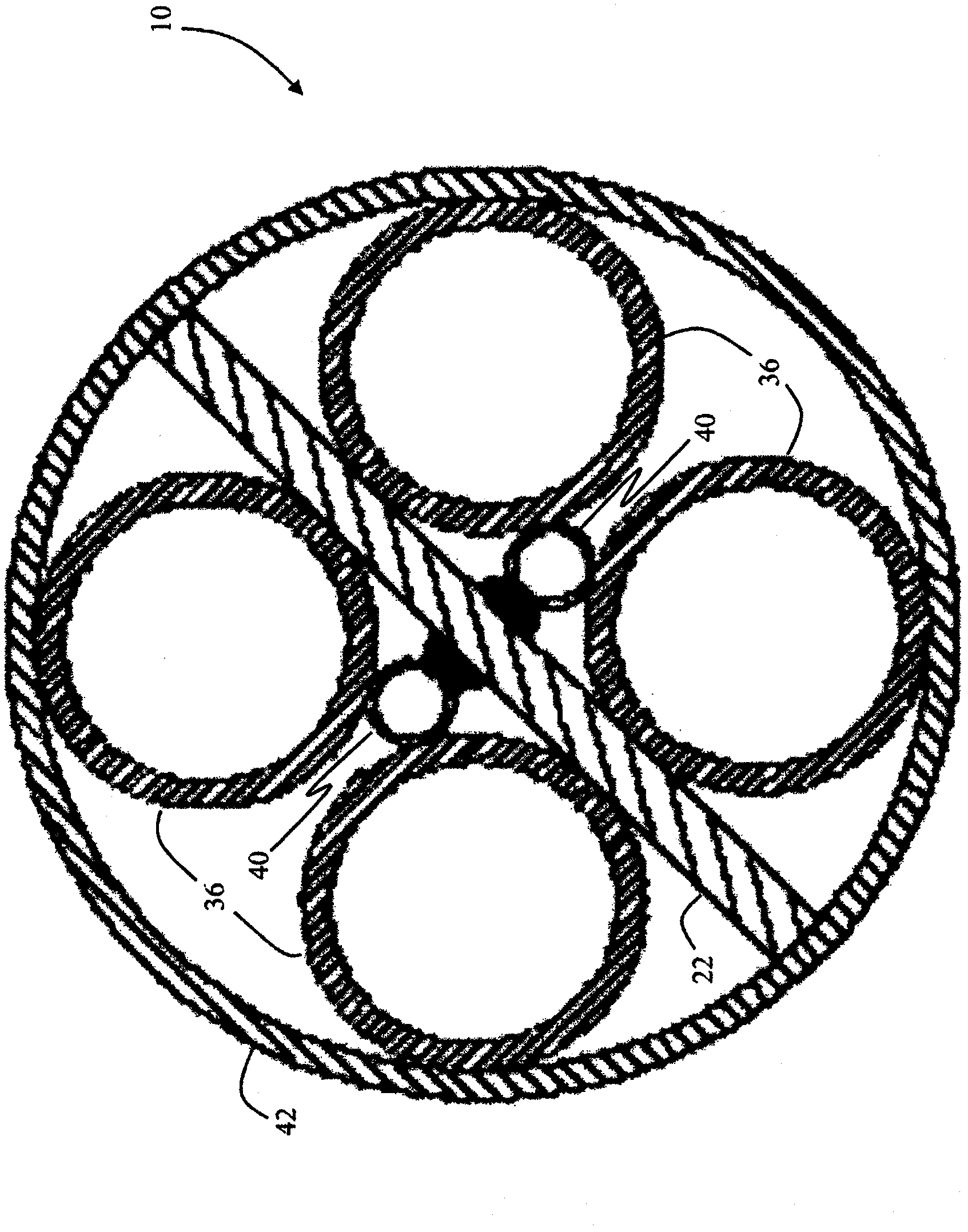Device, apparatus and method for obtaining physiological signals by way of a feeding tube
A feeding tube and lumen tube technology, applied in the field of neonatal and pediatric nursing, can solve problems such as pulmonary infection, trauma, inhalation, etc., and achieve the effect of increasing the relative signal amplitude and avoiding intervention.
- Summary
- Abstract
- Description
- Claims
- Application Information
AI Technical Summary
Problems solved by technology
Method used
Image
Examples
Embodiment Construction
[0029] refer to figure 1 , shows a neonatal feeding tube 10 . In one embodiment, feeding tube 10 is a disposable feeding tube with a measuring device for newborn infants (especially infants under one month old) who have not yet developed sucking ability or are otherwise unable to feed normally. In one embodiment, feeding tube 10 is a 5 French tube, or 1.67 mm in diameter. Appropriate proportions can be taken to obtain larger or smaller tubes. For convenience, the feeding tube 10 is shown in segments, although its actual size is, for example, approximately 300mm in length.
[0030] The newborn is fed milk replacer or breast milk through the feeding tube 10 . Feeding tube 10 is generally inserted into the nose or mouth, and into the esophagus and stomach. The distal end of the tube has a tip 12 similar to a standard feeding tube. figure 2 A cross-sectional view of the distal portion 14 is shown. A hole 16 at the end 12 allows nutritional products, such as infant formula o...
PUM
 Login to View More
Login to View More Abstract
Description
Claims
Application Information
 Login to View More
Login to View More - R&D Engineer
- R&D Manager
- IP Professional
- Industry Leading Data Capabilities
- Powerful AI technology
- Patent DNA Extraction
Browse by: Latest US Patents, China's latest patents, Technical Efficacy Thesaurus, Application Domain, Technology Topic, Popular Technical Reports.
© 2024 PatSnap. All rights reserved.Legal|Privacy policy|Modern Slavery Act Transparency Statement|Sitemap|About US| Contact US: help@patsnap.com










